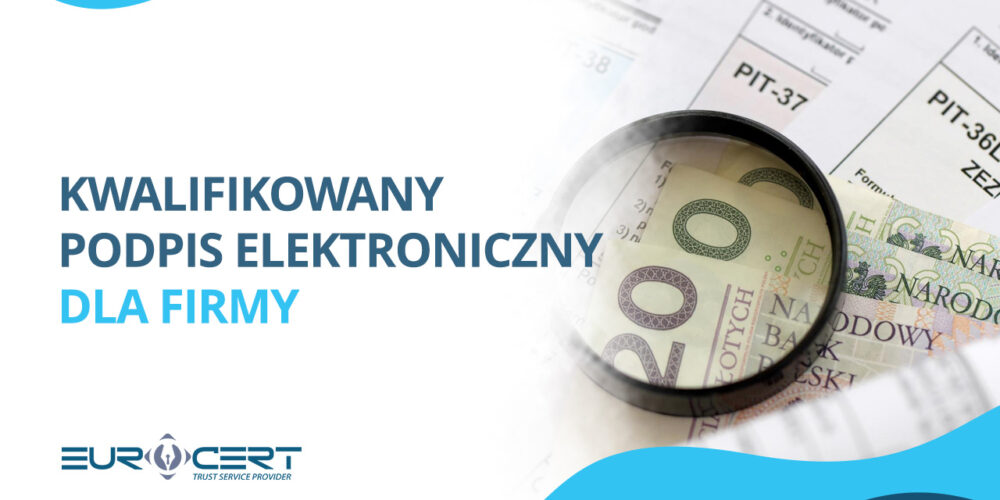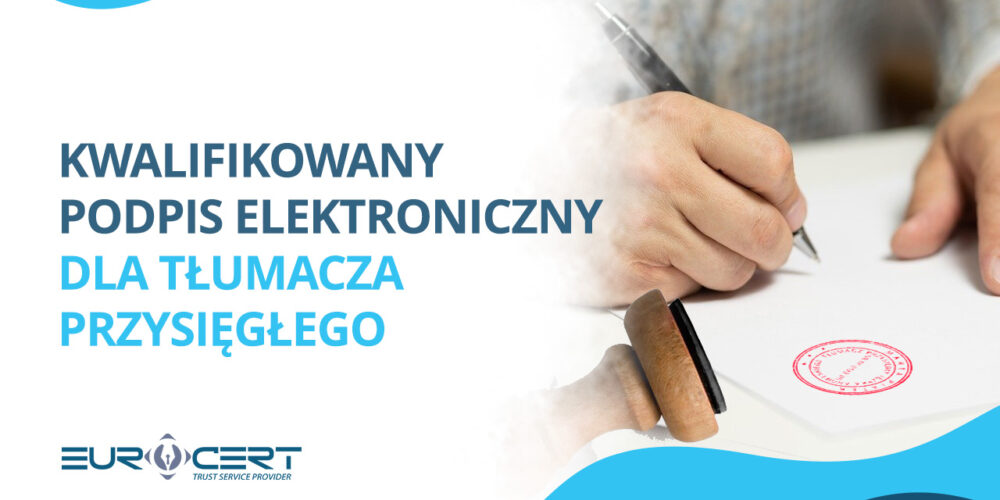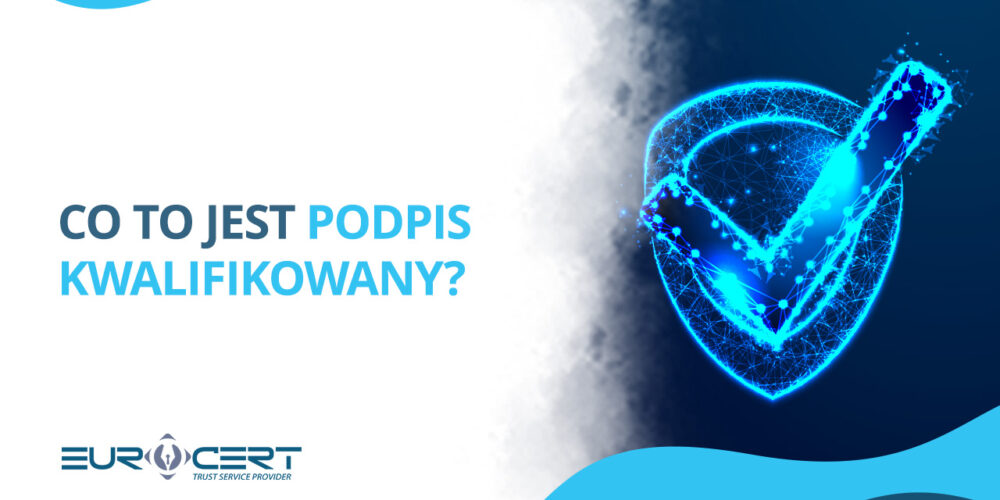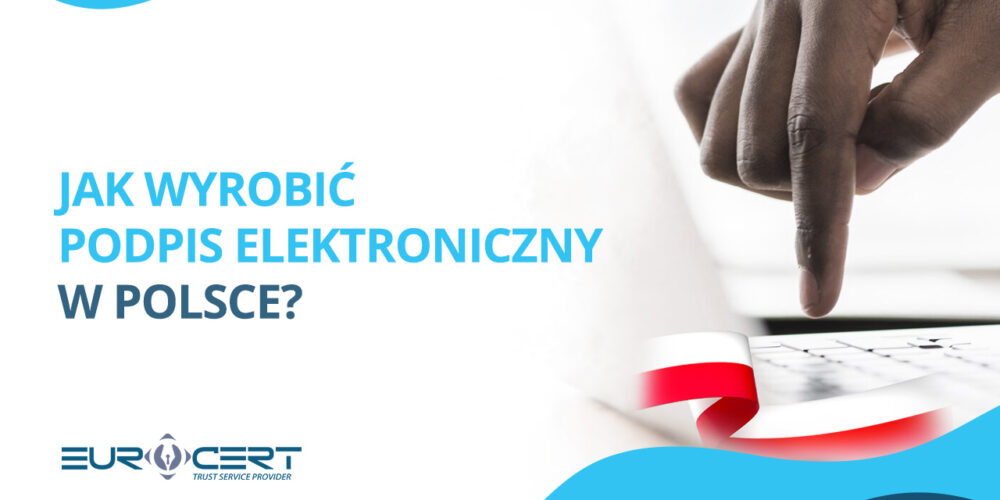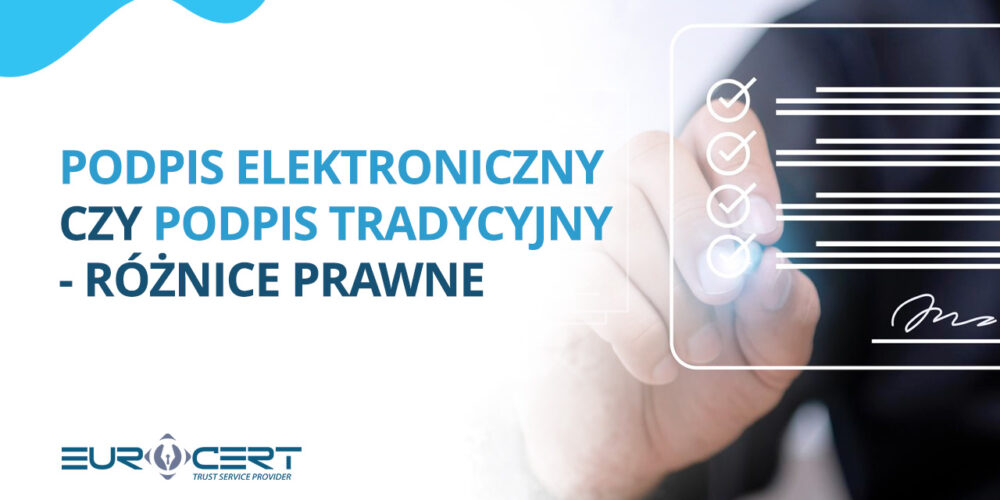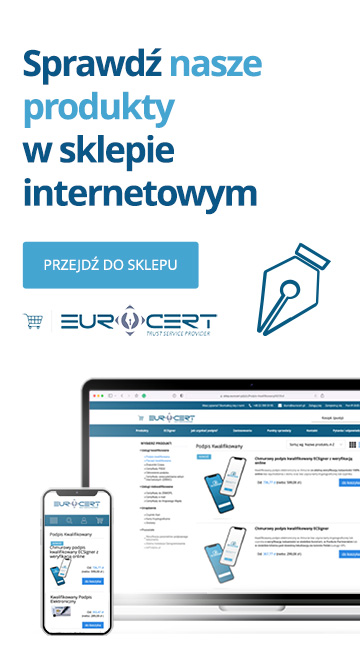Increasing popularity of remote work has made the use of electronic signatures more widespread. E-signatures allow you to complete formalities without leaving your home, saving a significant amount of time. Currently, there are three types of signatures available: basic electronic signature, advanced electronic signature, and qualified electronic signature. Understanding the differences between them can help you choose the best e-signature to meet your needs. Interest in the electronic signature market is steadily growing due to the ongoing digitization of business processes and the increasing adoption of remote work in public administration units. Currently, the most versatile tool for signing e-documents is the qualified electronic signature, which is effective in dealings with both government offices and business partners throughout the European Union. What are the properties of the available e-signatures?
Electronic Signatures – Legal Regulations
The key legal framework governing electronic signatures, including qualified electronic signatures, is the eIDAS (Electronic Identification and Trust Services Regulation). This regulation applies to all EU countries, standardizing rules for electronic identification and trust services in electronic transactions. These legal regulations build public trust in digital services, enabling faster and more efficient digitization of business processes and online communication with state institutions.
In Poland, the primary legislation detailing electronic signatures is the Act on Trust Services and Electronic Identification, dated September 5, 2016. Its main purpose is to incorporate the EU eIDAS regulation into Polish law and provide a clear legal framework for various types of electronic signatures.

Qualified Electronic Signature (QES)
Under the eIDAS regulation, a qualified electronic signature is an advanced electronic signature created using a specific qualified device. This tool operates based on a qualified electronic signature certificate.
This type of e-signature is the most universal since it can be used for most legal actions, including communication with business partners across the EU. It is the only type of e-signature that carries the same legal effect as a handwritten signature on a traditional paper document, making it legally equivalent to written form.
A qualified electronic signature meets the following conditions:
- It is uniquely linked to the signatory.
- It enables identification of the signatory.
- It is created using a secure device controlled exclusively by the signatory.
- It is linked to the signed data in a way that any subsequent changes are detectable.
- It relies on a specific qualified electronic signature certificate.
The qualified certificate used in this signature allows identification of the signatory. It is issued by a qualified trust service provider, such as the EuroCert Certification Center, which is listed on the trusted list of the National Certification Center. Before issuing a signature, the provider must verify the identity of the applicant through an in-person meeting with an authorized representative. Verification is based on ID or passport documentation, preventing data falsification or unauthorized issuance. This ensures secure identification and document integrity since any data alteration can be detected.
An example is the EuroCert qualified electronic signature.
Check the offer of qualified signatures
Advanced Electronic Signature (AES)
Only one type of signature includes a qualified certificate, so all other signatures are referred to as non-qualified signatures. While the eIDAS regulation allows the use of non-qualified signatures, it does not detail the criteria for generating such an e-signature. As a result, applicants for non-qualified signatures undergo less stringent verification than those seeking qualified signatures.
According to eIDAS, an advanced electronic signature must meet these requirements:
- It is uniquely linked to the signatory.
- It allows the signatory’s identification.
- It is created using data under the exclusive control of the signatory.
- It is linked to the signed data, ensuring any changes are detectable.
Non-qualified electronic signatures have legal effects but are generally limited to document form rather than written form. They can be used for business agreements or internal contracts but are not automatically recognized across the EU. The applicability of such signatures depends on local laws.
In some cases, non-qualified advanced signatures with certificates may also be used in dealings with public administration.
Let’s review the types of advanced electronic signatures with non-qualified certificates currently available in Poland.
Personal Signature – E-ID Card
A personal signature is an advanced e-signature stored in the electronic layer of new Polish ID cards issued since March 2019. These cards contain personal data, electronic ID information, and certificates for online authentication and document signing. Personal signatures have legal effects similar to handwritten ones, especially in dealings with Polish public entities. Private documents, such as civil-law contracts, can also be signed, but both parties must agree.
To use a personal signature, the user needs a special ID card reader or an NFC-enabled smartphone and dedicated software.
Trusted Profile (Trusted Signature)
A trusted profile is another type of advanced non-qualified signature that confirms the identity of its holder in online interactions with certain public institutions. It is primarily used for administrative matters within Poland, such as citizen services or business-related tasks, but is not suitable for dealings with foreign business partners.
Basic Electronic Signature
Basic electronic signatures, often used for document confirmation, are not governed by specific legal requirements. According to eIDAS, a basic signature consists of electronic data logically linked to other data, used by the signatory as a signature.
These signatures are easy to create using web applications or software but are not secure enough for high-stakes documents like court submissions or tender documents. The identity verification process is often limited to email or phone authentication, which undermines trust.
Basic electronic signatures can be used for business contracts, provided both parties agree. However, they are unsuitable for documents requiring a written form for validity.
Comparison of Electronic Signatures
To understand the differences between the various e-signatures, it helps to analyze them based on specific criteria. EuroCert has prepared infographics for a clearer comparison.
Criterion 1: Legal Effects
A qualified signature has the same legal effect as a handwritten signature and is recognized across the EU. Advanced and basic electronic signatures also have legal effects but may require proof of authenticity in court.
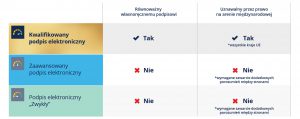
Criterion 2: eIDAS Requirements
Qualified electronic signatures meet the most stringent eIDAS requirements, as shown in the infographic below.
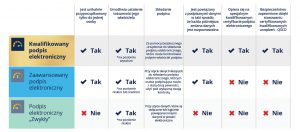
Criterion 3: Identity Verification Reliability
eIDAS defines three levels of electronic identification: low, medium, and high. Qualified signatures require the highest level of verification, handled by accredited trust service providers like EuroCert. In contrast, advanced and basic signatures typically offer lower security levels.
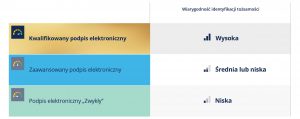
Criterion 4: Contract Form
Qualified signatures can be used for all contract forms, including written and document forms. Advanced and basic electronic signatures are limited to document forms.
Criterion 5: Technological Security
Qualified signatures rely on strict technological security standards, using PKI (Public Key Infrastructure) technology. Advanced and basic signatures depend on the provider’s security measures.
Criterion 6: International Recognition
Qualified signatures are recognized across all EU member states and increasingly in non-EU countries. Advanced and basic signatures lack uniform international recognition and depend on mutual agreements.
Choosing an Electronic Signature – Summary
When selecting an electronic signature for daily use, consider the importance of the documents being signed. The higher the importance, the more advanced the signature required.
The qualified electronic signature is the most versatile and secure option. It enables signing all document types and is recognized throughout the EU. Investing in a qualified signature ensures security and reliability, crucial for business decisions.





